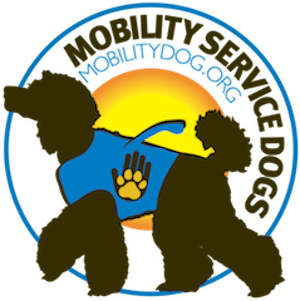How Therapy Dogs Can Help Patients with Alzheimer’s Disease
Papi, the Service Dog, Patiently Waiting at the DMV
Animal-Assisted Therapy (known as AAT) is a goal-directed health strategy in which an animal meeting specific criteria becomes an integral part of a disease or injury treatment process. AAT therapy is delivered or directed by health or human service providers working within the scope of their profession. For patients, the simple act of petting an animal promotes an autonomic relaxation response, including the release of serotonin, prolactin and oxytocin, hormones that can help elevate mood.
The symptoms of Alzheimer’s Disease
AAT can provide dramatic benefits to patients suffering from Alzheimer’s Disease. Forgetfulness is perhaps the best-known Alzheimer’s symptom, but patients can also exhibit such behavioral symptoms as:
Moodiness.
Apathy.
Changes in personality.
Unsocial behaviors and language difficulty.
People with Alzheimer’s can often seem disconnected from past, present and future life, as if living within an impenetrable, sensory-deprived cocoon. AAT therapy has been credited with:
Decreasing blood pressure.
Reducing anxiety.
Increasing social behavior of people with dementia, enabling them to reconnect with lived experience, temporarily breaking the time-bound restrictions of the disease.
Therapy Dogs and Alzheimer’s: The Research
In a research project conducted in Sweden, four women and one man with medium to severe Alzheimer’s each received 10 visits from a trained therapy dog. Their responses to interacting with the dogs were recorded on video and reviewed and transcribed by the research team. The team recorded verbal communication (including speech and laughter) as well as non-verbal connections such as eye contact and body movements. All of the participants had relationships with dogs in the past and consequently were likely to have positive general feelings about dogs as pets and companions.
Patients’ Experiences with Therapy Dogs
Gus The Service Dog With His Handler At the Hospital
Interactions with the therapy dogs elicited joy, laughter and enjoyment among the Alzheimer’s patients, though a few were reluctant to keep the dogs too close. For most participants, proximity to the therapy dog created moments of calm and tranquility. The researchers explained, “The encounter with the dog created a communion and an understanding with the dog. Memories from earlier life (returned) and were narrated … a sadness and anxiety arose when the visit ended, and a desire was expressed to want to meet the dog again.” The contact between dog and human was positive and yet poignant. “(The patients) were confident in the dog’s presence with one’s memories, talking clearly with a flow and in whole sentences with the dog, yet (sometimes) feeling uncertain and failing when (trying) to talk and tell stories about the dog.”
Meaning of “Self” in Animal-Assisted Therapy
The Charming and Silly Apollo Dusty
We humans are complex organisms. Through our consciousness, we translate our experiences with the world through our senses and our minds, through our physical and psychological “I” identity. People with Alzheimer’s can lose this sense of self and become disconnected not only from the immediate outside world but also from their own identity within times past, present and future. Therapy dog contact helped the patients by enabling them to feel, see and hear the dog and encouraging the expression of their own human wholeness.
The researchers used the term “Episodes of Lucidity” to describe how dementia patients can, at least temporarily, experience current stimuli and articulate their feelings with clarity. Skillful human caregivers can elicit these responses through directed conversation one-on-one with a patient, helping the individual rediscover a lost self. The encounters with therapy dogs had a similar effect.
Dogs Helping Humans Regain Humanity
Paraphrasing the researchers, the encounter with therapy dogs seemed to bring out an awareness of the patients’ past and present existence, enabling them to connect with feelings and senses and at least briefly fulfilling their need to be a whole human being again. This is one more example of how the emotional bonds between humans and dogs can help even the profoundly afflicted among us regain our place in time and reestablish, if only temporarily, the full scope of our humanity.



